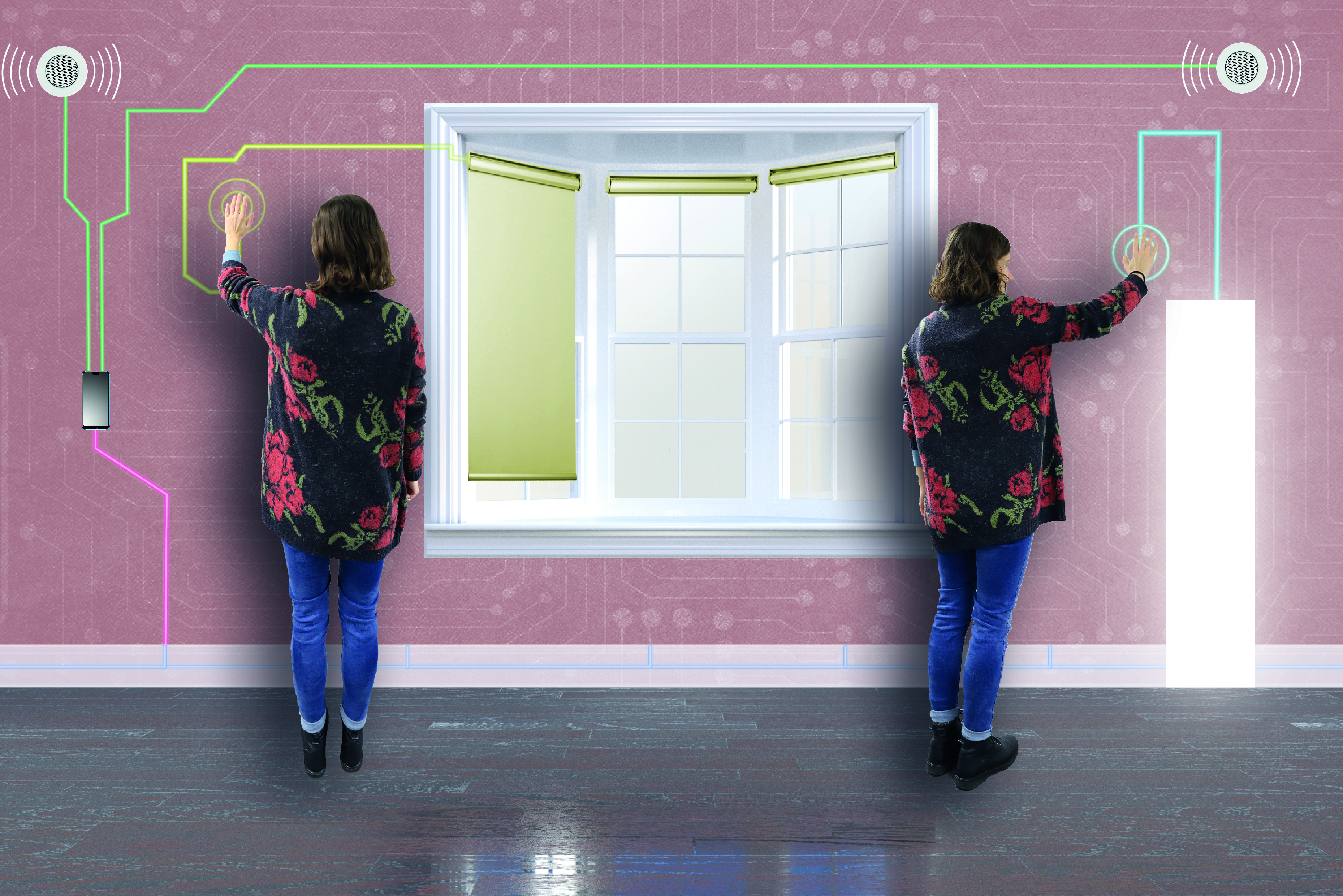Smart wallpaper for easy battery and wireless integration of IoT devices
Smart homes aim to install technical systems wherever they are needed in the house. However, the necessary power and communication connections are not always available. In the "ConText" project, Fraunhofer IFAM is developing a smart wallpaper that can be easily installed in the living area without much effort.
Smart homes promise a gain in quality of life, safety, and comfort through the networking of numerous household appliances, from lamps to vacuum cleaner robots. Various sensors measure various parameters in the living environment, such as temperature and humidity, or detect movements to intelligently control lighting and heating. Wall-mounted controls and small screens enable user interaction; but nowadays, controllability via a smartphone app is also a matter of course.
However, the increasing density of technology in the home also brings with it problems. Many of the IoT devices are connected wirelessly, the static laying of cables in the walls is unattractive for home users because it is costly and requires a well thought-out concept, as it is rigid and subsequently inflexible.In comparison, however, radio applications increasingly suffer from crowded frequency bands, are sometimes unreliable and always raise security concerns. There is also the problem of power supply; often solved by batteries, these have to be changed regularly - this is not only a nuisance, but also an ecological problem.
Intelligent textile surfaces
The idea behind the "ConText" project is to equip the wallpaper with hidden conductor tracks that provide devices with an energy and data connection - without the need to lay cables or resort to batteries and radio technology. The technology itself is invisible and the wallpaper as such does not differ in appearance from its conventional counterparts - even the processing is largely as usual. Functional units such as sensors, switches and other interactive components or lighting elements, can later simply be plugged onto the wallpapered wall and are then immediately ready for use.
The long-term usage horizon of rooms is difficult to predict. What was once used as an office can quickly be rededicated as a child's room if life circumstances change. The positioning of elements such as classic light switches needs to be carefully considered when planning the room, because they can no longer be simply relocated at a later date. The smart wallpaper is different: just as easily as the add-ons can be installed, they can also be removed again and installed in a different place. This creates flexibility for living spaces that can be better adapted to the needs of use.
Different approaches to embedding the conductor structures
The "ConText" project is investigating the technological approach of embedding conductive tracks in wallpaper to provide an infrastructure for energy supply and communication. Sensors, switches, interactive elements - all of these can be plugged onto the wall just as easily as they can be removed again, without cables, batteries or radio. Various technological approaches are being investigated for embedding the conductor structures, ranging from metallic particles in nonwoven production, woven-in conductive yarns or print application using conductive inks and pastes in various printing processes. For contacting between the electronic components and the wallpaper, options such as conductive adhesives, microneedles or inductive coupling are considered.
Fraunhofer IFAM's contributions to the project are in the area of printing production and application of conductors and sensor structures in the area of wallpaper and for gesture control. In addition, we are developing the proprietary electronic components, programming their firmware, and contributing to the central control software.
The project "ConText" (FKZ: 16SV8251) is funded by the German Federal Ministry of Education and Research (BMBF) in the framework program "Innovation and Technology Partnerships for Human-Technology Interaction: Intelligent, Networked Objects for Everyday Life ".
Further project partners:
- Deutsches Forschungszentrum für Künstliche Intelligenz GmbH, Bremen
- Robert Bosch GmbH, Renningen
- Deutsche Institute für Textil- und Faserforschung Denkendorf (DITF)
- Norafin Industries (Germany) GmbH, Mildenau
- Peppermint Holding GmbH, Berlin
 Fraunhofer Institute for Manufacturing Technology and Advanced Materials IFAM
Fraunhofer Institute for Manufacturing Technology and Advanced Materials IFAM